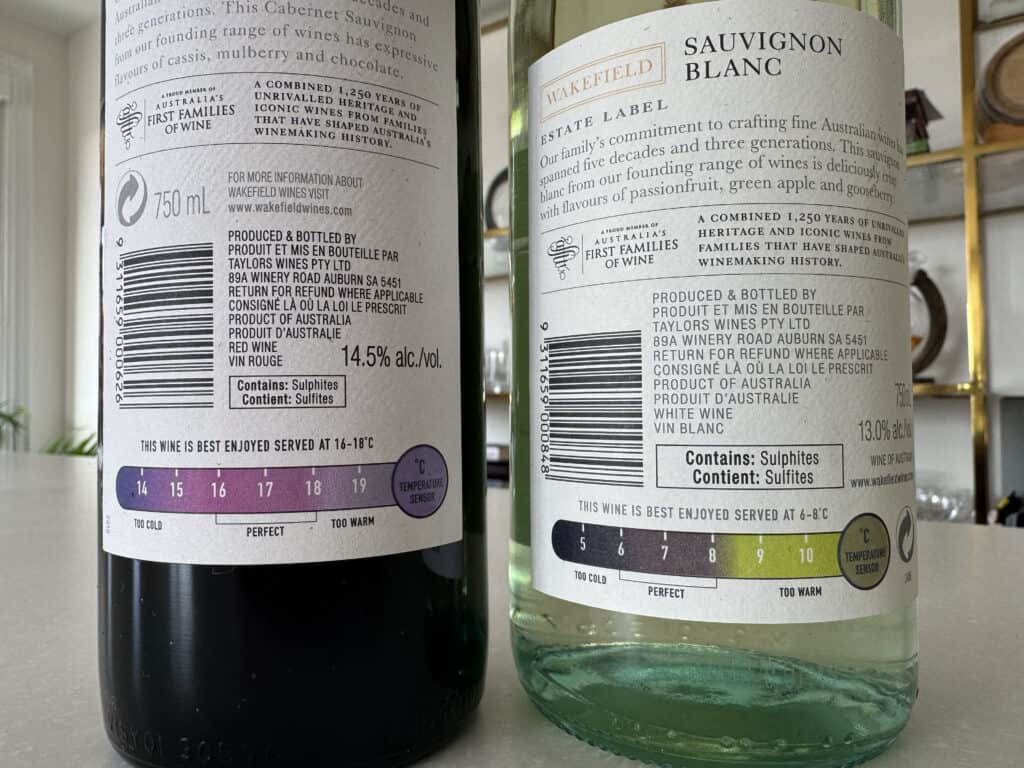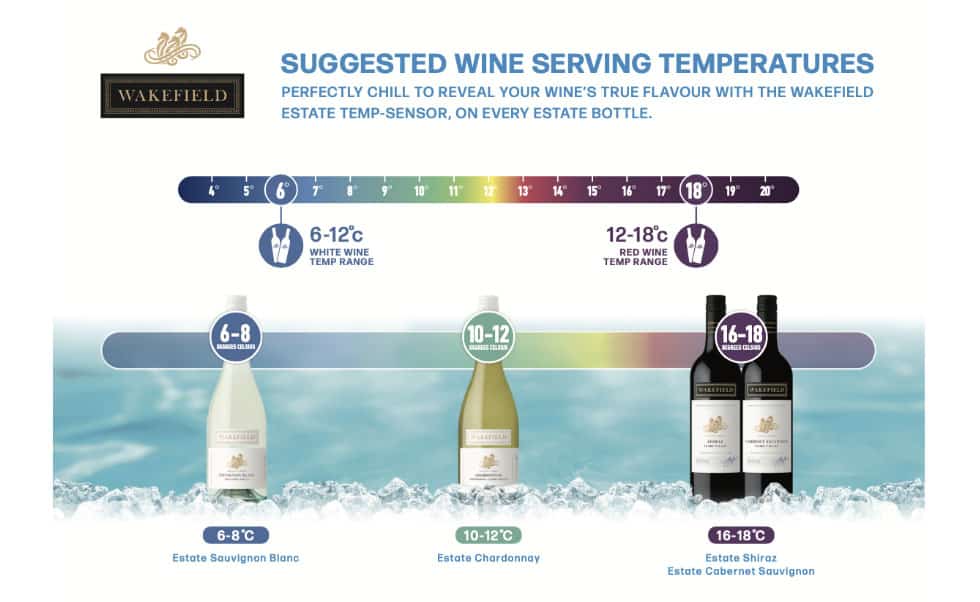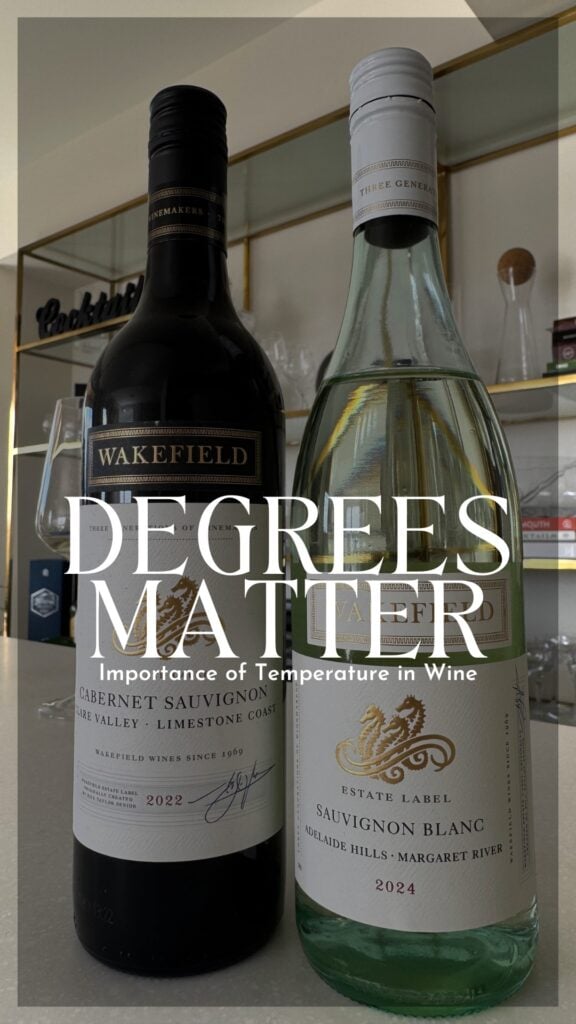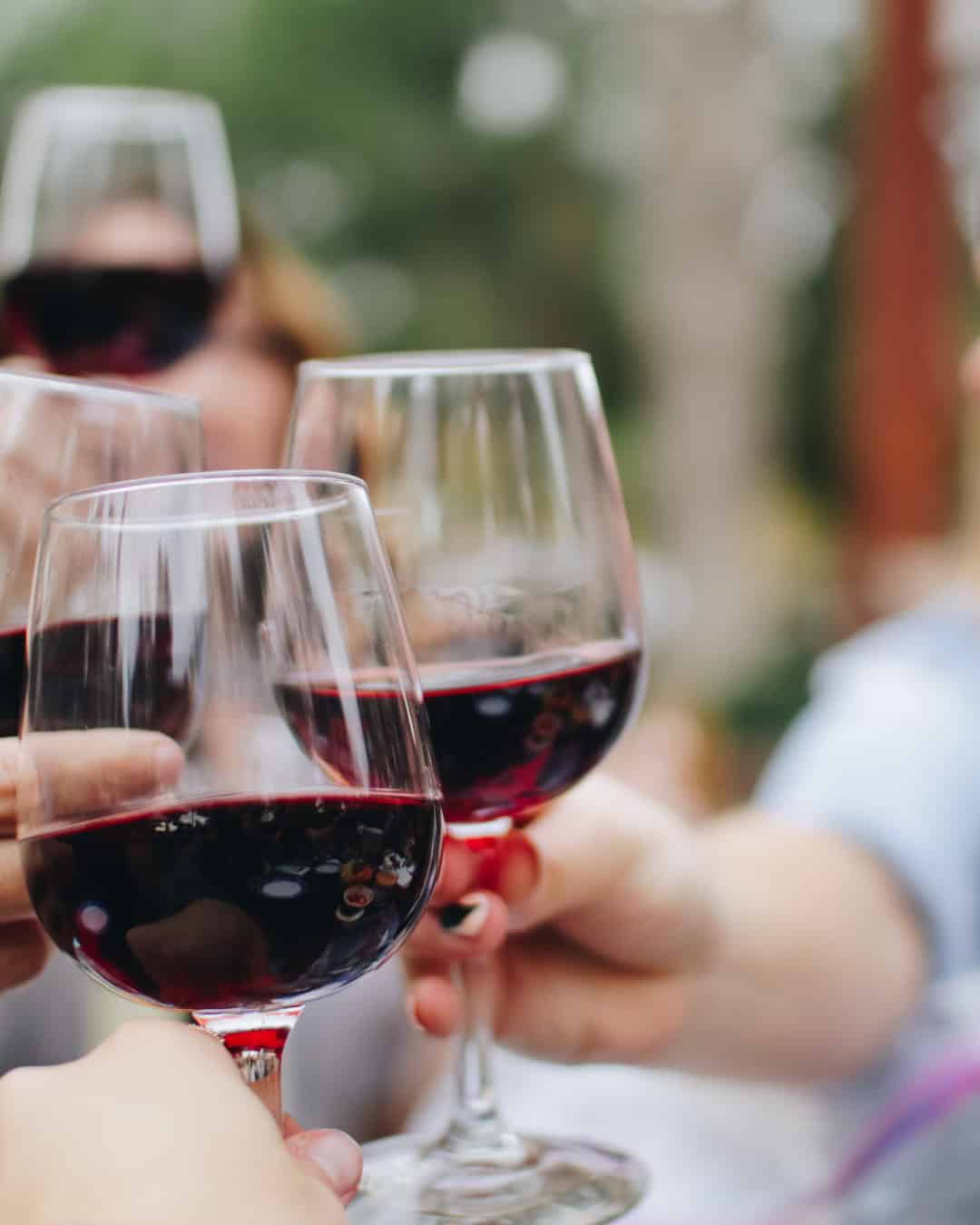It’s rare that you’ll see me on here talking about Temperature and Wine. My life is cocktails, and how to mix things up at home. But Temperature plays a huge role in both Cocktails and Wine Culture. Plus, I can guarantee that when I’m too tired to put together a cocktail, I’m heading towards the wine rack. Today, I want to talk about the importance of temperature in wine and why Degrees Matter. And I’ll be highlighting a wine that conveniently tells you when your wine is at optimal drinking temperature.
Temperature and Why it Matters in Drinks
There’s a lot of factors, often simple, that can ruin a cocktail or make it great; Temperature being a crucial element. This not only factors in ice, but also the climate you’re in, the vessel you’re using, etc. I even go into a deep dive of ice in this article ‘The Importance of Ice and Cocktails‘ here. Even having some of your ingredients previously chilled before pouring can drastically change the outcome of a cocktail.
So here’s an example of how Degrees Matter: You’re creating a sparkling wine cocktail, for example a French 75. 75% of the cocktail is likely going to be sparkling wine. The only element that’s chilled on demand is by shaking the Gin, Lemon and Sugar component. The rest is Sparkling Wine. So if you’re pouring a bottle of sparkling that’s been sitting at Room Temperature, you’re entire cocktail is going to be warm. The gin hits your palate different, it’s not that crisp, vibrancy that you would want from a fresh, bubbly cocktail. And who wants warm sparkling? Not me!
For this reason, some restaurants or establishments will take the extra step of chilling their glassware as well. I’m not against this, I think it has a place in certain circumstances, but for example, I don’t need my martini that chilled. I actually don’t particularly enjoy extremely chilled Gin Martini’s. I find that it loses some of it’s flavours and affects the overall experience.
Be mindful of your surroundings, your glassware and even the style of ice you’re using before determining your cocktail.

Temperature in White Wine
Now today’s special write up is thanks to Wakefield Wines. They’re a distillery out in Australia that is campaigning a more comprehensive understanding of appropriate wine temperature, and the whole reason behind Degrees Matter. They’ve taken the leg work in determining if your wine is at the right temperature, by having a metric on every single one of their bottles that tells you if the wine is too warm, too cold or just right. Remember that Coors Light campaign where the mountain turns blue if it’s chilled enough? Think that, but with WINE!
When it comes to White Wine, not all styles of wine fit into 1 particular wine range. Chardonnays are ideal in a slightly warmer temperature, vs a light bodied White such as a Pinot Grigio. Another fun little twist is that your Aromatic wines, such as Riesling and Gewurztraminer is best suited in slightly warm/cool temperature vs the coldest setting with Pinot Grigio.
So it goes Light Bodied Whites from 7 degrees to approximately 12 degrees for those aromatic and full-bodied whites.
Temperature in Red Wines
Just like White Wine, Reds can also range in temperature depending on the style of wine. You’re lighter-bodied Red Wines can benefit from a slight chill to it. Leaning closer to that Chardonnay temperature for your Pinot Noirs, etc. Whereas your Cabernet and Shiraz do well at Room Temperature. I think a general rule of thumb when it comes to temperatures in your wine, is that your lighter-bodied wines strive in cooler temperatures and the more full-bodied the wine, the warmer it should be.
Note that Red Wines that are TOO warm will destroy a wine. Being beside a fridge that exerts heat, or even my cold room in the Summer time can get warm and our reds suffered that year for that mistake. Make sure to be mindful of temperatures of your bottles the whole year round.
Aim for 12 degrees to 16 degrees with your Red Wines, dependent on the style.
Temperature in Sparkling Wines
Sparkling I find best to be Cold Cold, but again, there is flexibility here as well. More full-bodied, complex Sparkling / Champagne bottles thrive when it’s cold, but doesn’t have to be intensely that. And some of those bright, dry, crisp styles is just perfect from an icy cold bath. Again, be mindful of it’s environment, what will impact it’s temperature, and how to maintain it for as long as possible!
With that said, I do want to share a graph created by the Wakefield Wine Team here for reference:

Hola Wakefield Wines & Why Degrees Matter
I was blessed to be a part of an event this year that brought all this attention to our group. They’ve been an advocate for Degrees Matter, which speaks to the importance of temperature for your drinks, in particular Wine. Wakefield is taking it another step further by highlighting on their bottle with a metric system that allows you to know whether your wine is at the optimal temperature. As I mentioned above, you can find on their Estate Sauvignon Blanc, Chardonnay, Shiraz and Cabernet Sauvignon bottles, a scale that actively tells you if the wine is at the correct temperature. Available now at your LCBO!


